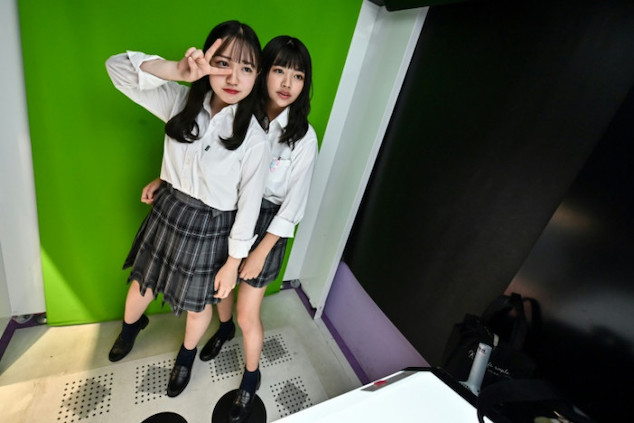

Japanese Purikura photo booths continue to remain popular as vendors re invent themselves and continue to appeal with youth in the age of the smartphone selfie.
Two schoolgirls primp themselves before a long mirror, preparing for the perfect shot. However, they’re not taking a smartphone selfie, they’re using a Purikure photo booth.
These old-style photo booths are now coming back in parts of the world in the most recent years due to their nostalgic value, even in the smartphone era. But the Purikura – which is an abbreviation of the Japanese pronunciation of “print club” – is able to offer more than simple strip of passport photos.
And Nowadays there are plenty of people who just fall in love with games and there’s the possibility to play at an online casino. The games available there are wonderful and you’ll have plenty of fun playing there. In Japan there is the game of Pachinko, which is very easy to find at any online casino since it’s loved by everyone.
They have a wide range of retouches, adornments and enhancements, and that’s how they still so popular 25 years after their debut in Japan, especially with teenage girls and younger women love their cute output.
And there’s competition, of course, regarding the smartphones and the increasingly sophisticated retouching apps. But this is nothing since gaming firm Sega is taking advantage on the Purikura’s enduring appeal and they’re launching a new model this year, which will definitely be amazing.
Nonoka Yamada, a 17-year-old girl, has been a Purikura fan for almost a decade and she stated that she and her friend use these machines several times a week. She said that all the girls in her class take Purikura. She also said that her first time using one was when she was 8, and the camera lens was too high so she had to stand on her tiptoes.
She added that Purikura is much more than a simple smartphone selfie. It lets people make themselves look good and there’s always the possibility to change their faces. She wants to put the photos on Instagram, since they’ve good quality with good lightning.
These booths became popular very fast at gaming arcades, where there were long lines of schoolgirls who waited to have their photos taken.
There were many companies who quickly saw an opportunity and jumped into it, which by 1997 was worth more than Y100 billion ($950 million). But then the selfie era happened, and that’s when users were able to start taking their own photos and to retouch them for free with their own phones, rather than paying for a sheet of 16 photos.
Some companies completely abandoned the Purikura business, while others went for a more profitable venture. Nowadays, there’s just one manufacturer that remains: Furyu. This is a former affiliate of the Japanese electronics firm called Omron.
Yuki Hikiti, who’s the spokesman of Furyu, stated that it was in 1997 that they launched their first machine using Omron technology and it offered caricature faced. However, it was a total flop. Unfortunately, these machines had nothing in common with young girls, probably because it was developed by middle-aged men.
The brand began consulting with customers directly, which was a huge advantage.
In recent years, the market has stabilized, with around 10,000 Purikura in the country. And while these booths are less pervasive these days, they do still highly popular – a Foryu app for receiving Purikura photos had 19 million users registered in March.
Yuka Kubo, who’s an independent researcher studying the Purikura phenomenon, traced how the booths have evolved. The early models featured little more than cutesy borders around photos, with limited retouching tools that debuted in 1998.
In 2003 there was incorporated facial recognition technology which allowed specific featured to actually be altered, especially the eyes.
Kubo said that was the start of the fashion for enormous eyes. He was referring to a popular feature giving users the doe-eyed gaze of anime characters. He stated that it started a competition between manufacturers but it was all a demand from the girls, over who could offer the biggest eyes.
In recent years, retouching options have become much more sophisticated such as shades, slimmer face, tints and many others. And even while smartphones and apps offer retouching features, Hikita said there’s still place for Purikura.
You need to have skills in order to take a good selfie, Hikita said.
With the coronavirus pandemic there are new measures in order to keep every user safe, including disinfectant at all booths, but the virus has not kept fans away.
Hikita says that customers are coming back, much faster than everyone expected.






